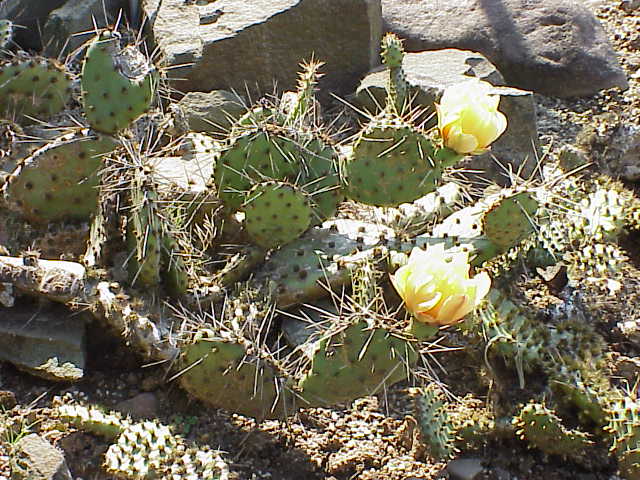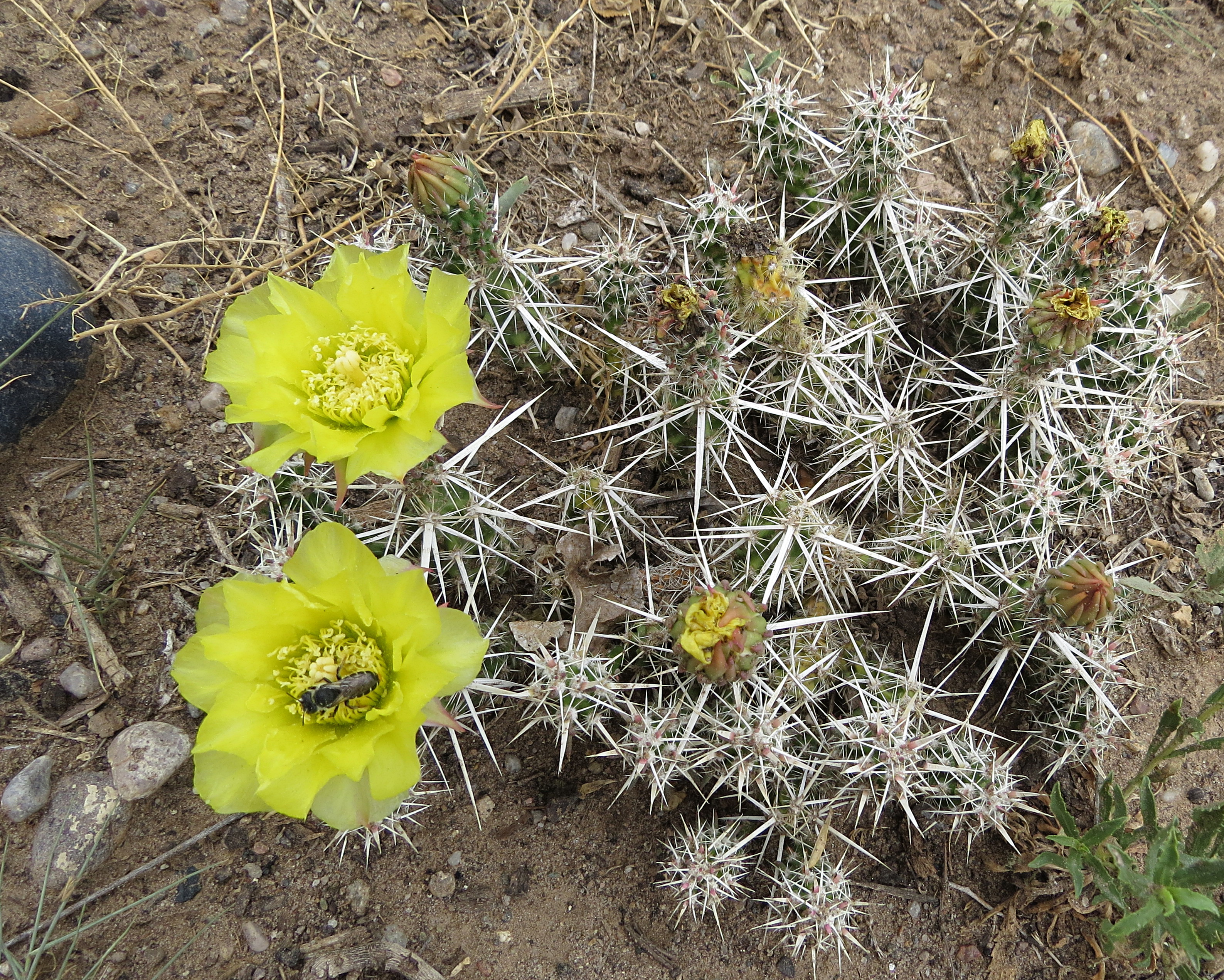By Sandra Nelson
As unlikely as it seems, you can grow cacti outdoors in the Midwest — as long as you recognize the fact that cacti have some particular requirements that must be met.

Cacti need excellent drainage. Heavy soils, like our typical midwestern clay soils, hold water which causes root rot and death. Planting in porous soil in raised beds or on berms promotes healthy growth. A soil mixture that has equal amounts of soil, sharp sand and gravel or pumice should provide the drainage that cacti need to thrive. Be aware that the entire bed should have excellent drainage, not just the immediate area around each individual plant. Amending only the planting hole is likely to cause water to pool around the roots as it will be held in by the surrounding clay soil.
Cacti need full sun. A minimum of six hours a day in both summer and winter is necessary for most cacti species to flourish outdoors. Placement next to south or west facing walls, or next to cement walkways can add some beneficial reflected light and heat during cold winter months. As you are deciding where to place your bed however, remember to consider the amount of sun it will get in the winter months when the sun is lower in the sky.
Cacti need to be planted in the late spring when the chances of frost, especially a hard one, are minimal. Planting in mid-to-late April gives time for the cacti to establish a strong root system which will help to support the plant if there is a harsh winter.

Cacti have shallow root systems that can be easily damaged. Once planted, cacti should not be disturbed. A pea gravel or rocked ground cover can help to protect the shallow roots and to prevent competition from weeds.
Cacti planted in the Midwest need to be cold-hardy varieties. There are about a dozen types of cacti that are hardy at 0 degrees F and below, and each have several beautiful variations. We’ve included four species that are particularly suited to Kansas City and the surrounding areas.
Echinocereus — Hedgehog or Porcupine Cactus
Opuntia — Prickly Pear
Escobaria vivipara — Pincushion or Beehive cactus
Corynopuntia (also called Grusonia) — Club Cholla





